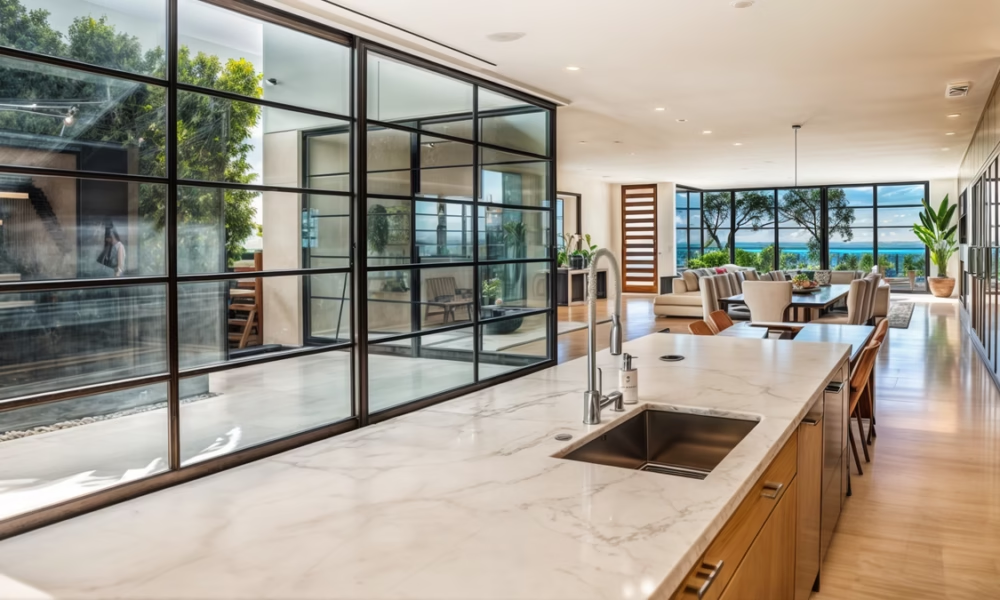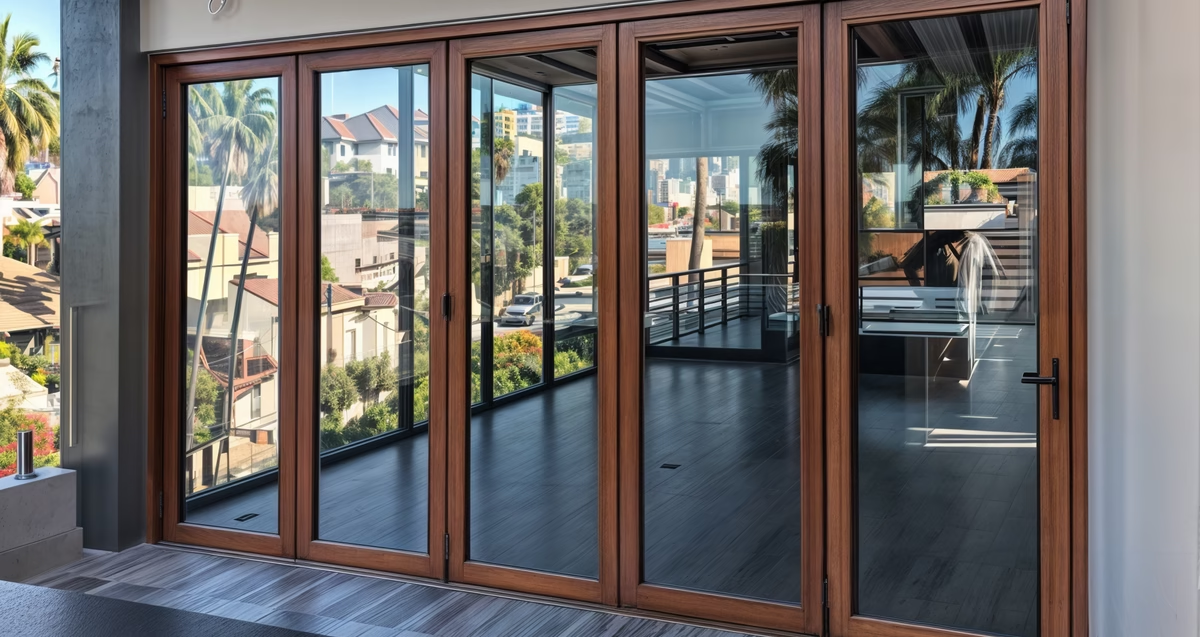-
Jul, Tue, 2025
How to Install a Bifold Door: Why It’s Important to Consider a Manufacturer
Bifold doors are one of the most attractive options when it comes to renovating your space. This type of system allows you to create open environments, maximize natural light, and seamlessly connect indoor and outdoor areas.
That’s why, if you’ve been wondering how to install bifold doors, it’s important to know the real secret isn’t just in the installation. It starts with choosing the right manufacturer. A specialized provider not only guarantees a custom-made system but also makes the installation process easy, safe, and ensures results that will last for years.
In this article, we’ll explain the basics of installing bifold doors and why working with an expert manufacturer like PRL Glass & Aluminum makes all the difference.

What Are Bifold Doors and Why Are They So Popular?
Bifold doors, also known as folding doors, are systems made up of multiple panels connected by hinges that fold like an accordion when opened. This design allows the doors to slide along a track and tuck neatly off to the side, creating wide, unobstructed openings.
Their popularity has grown in both residential and commercial spaces for several reasons:
- Space-saving: They allow an entire wall or divider to open without taking up extra space when folded.
- Modern aesthetics: Their minimalistic and elegant design fits perfectly with contemporary architectural trends.
- Indoor-outdoor connection: Ideal for connecting living rooms, terraces, gardens, or common areas to the outdoors.
- Natural light: Mostly made of glass, they allow abundant natural light to fill spaces.
- Versatility: Suitable for homes, restaurants, offices, hotels, or retail stores.
However, to truly benefit from all these advantages, the quality of materials, system design, and proper installation are essential factors. This is where choosing the right manufacturer can make the difference between a successful project or a failed one.
✅ Learn all about our Bifold Door
How to Install Bifold Doors: The Traditional Step-by-Step Process
When it comes to how to install bifold doors, the traditional process requires precision and expertise to ensure proper functionality and a flawless finish. These are the basic steps that professionals typically follow:
Accurate space measurement: Before any purchase or fabrication, it’s essential to precisely measure the opening where the doors will be installed.
Selecting the right system: Choose the type of bifold door, materials, number of panels, and finishes that best suit the project.
Preparing the opening: Condition the frame or structure that will support the system, ensuring it’s level and structurally sound.
Installing tracks and guides: Install the components that allow the panels to slide and fold. This includes at the top and, if required by design, at the floor.
Mounting the panels: Place the panels one–by–one, to ensure proper alignment, adjustment, and functionality for each section.
Final adjustments and testing: Once the system is fully assembled, perform the necessary adjustments to ensure smooth operation, perfect alignment, and stability.
The Risks of Poor Installation
While these steps may seem simple in theory, any mistake in measurements, assembly, or leveling can lead to:
❌ Misaligned or uneven panels.
❌ Difficulty opening or closing the doors.
❌ Premature damage to the system due to improper stress.
❌ Loss of aesthetics or airtight sealing.
❌ Serious accidents, as the system could collapse and injure people.
That’s why, even if you understand the installation process, the best decision to ensure a professional and long-lasting result is to work with a specialized manufacturer. They can provide a custom-made system and technical guidance from the very beginning.

Why You Should Work with a Bifold Door Manufacturer
Beyond knowing the installation process, working with a specialized bifold door manufacturer is the best way to ensure your project is successful from day one. Here are the key reasons:
- Custom-made systems: A manufacturer designs and produces a system tailored exactly to your space, avoiding improvised adjustments that complicate installation.
- High-quality materials: These ensure durability, resistance to everyday wear and tear, and smooth operation over time.
- Full compatibility: All components, glass, aluminum, hardware and tracks are designed to work seamlessly together with no risk of mismatches.
- Specialized technical support: Manufacturers can provide recommendations for the best installation methods, offer certified installation services, or assist your contractor directly.
- Advanced technologies: Systems installed by specialized companies often include innovations like thermally broken frames for better energy efficiency, or impact-resistant glass designed to withstand break-ins or civil disturbances.
- Compliance with regulations: Experienced providers ensure that the system meets all necessary safety and efficiency standards required for your project.
Instead of worrying about how to install bifold doors on your own, or using a generic system, a manufacturer like PRL Glass & Aluminum can become your strategic partner. They’ll ensure every detail, from fabrication to installation, is perfectly executed.
Ready to Install Bifold Doors? Start with the Right Manufacturer
Now that you know how to install bifold doors and why professional installation is so important, the next step is the most crucial: work directly with a specialized manufacturer that can guarantee a complete, functional, and long-lasting system.
At PRL Glass & Aluminum, we don’t just manufacture custom bifold door systems, we support you throughout the entire process:
We help you select the perfect design, materials, and finishes for your space, thanks to our team of specialized craftsmen.
- We fabricate made-to-order solutions using the highest quality aluminum and glass.
- We provide expert installation guidance or connect you with certified professionals.
- We guarantee a robust, elegant system built to last for years.
- We offer market-leading delivery times.
👉 Have a project in mind? Contact us today and transform your space with bifold doors designed to last and impress.





















